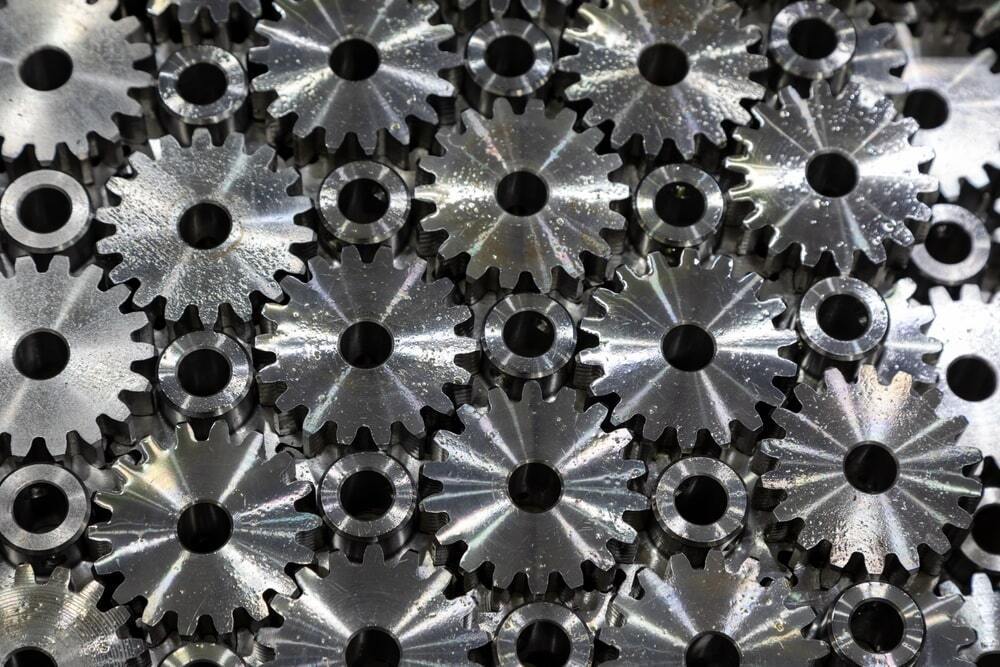https://isohitech.com/ Machine parts are the unsung heroes behind the seamless functioning of various devices and systems. From the intricate gears in a clock to the powerful engines propelling vehicles, understanding the world of machine parts is like deciphering the language of technology. In this article, we’ll delve into the diverse types, functions, and materials of machine parts, exploring their significance in our daily lives and the ever-evolving landscape of technology.
Types of Machine Parts
Mechanical Components
Mechanical components form the backbone of machinery, translating power and movement. Gears, bearings, and shafts are prime examples, each playing a crucial role in ensuring smooth operation.
Electrical Components
Electrical components, such as wiring, resistors, and capacitors, are essential for the electrical systems within machines. They facilitate the controlled flow of electricity, powering various functions.
Electronic Components
The rise of electronic components, including microprocessors and sensors, has ushered in a new era of precision and automation. These components enable machines to sense, process information, and adapt to changing conditions.
Functions of Machine Parts

Power Transmission
Machine parts like belts and chains are responsible for transmitting power from one component to another. This ensures coordinated movement and functionality.
Motion Control
Components like servos and actuators govern the motion of machinery. They play a pivotal role in robotics, allowing for precise control and automation.
Sensing and Feedback
https://mikeshoppingroom.com/ Sensors are the eyes and ears of machines, providing vital feedback for decision-making. They detect changes in the environment, ensuring machines operate effectively.
Common Machine Parts in Everyday Life
In our daily interactions, we encounter various machine parts without realizing their significance.
Gears and Cogs
Gears, found in clocks and vehicles, regulate speed and torque, showcasing the importance of mechanical components in everyday items.
Motors and Engines
From electric toothbrushes to car engines, motors and engines power numerous devices, highlighting the diversity of electrical components.
Sensors and Actuators
Smartphones and home automation systems utilize sensors and actuators for touch response and automated functions, exemplifying electronic components in action.
Materials Used in Manufacturing Machine Parts
The choice of materials in manufacturing machine parts greatly influences their performance and longevity.
- Metals
Steel, aluminum, and titanium are common in mechanical components due to their strength and durability.
- Polymers
Plastic components offer versatility and corrosion resistance, making them suitable for various applications.
- Composites
Composite materials combine the best properties of different materials, providing a balance of strength and lightness.
Importance of Regular Maintenance for Machine Parts
To ensure optimal performance and longevity, regular maintenance of machine parts is essential.
- Prolonging Lifespan
Routine inspections and lubrication can significantly extend the lifespan of machine parts.
- Ensuring Optimal Performance
Proactive maintenance prevents unexpected breakdowns, ensuring machinery operates at peak efficiency.
Signs of Wear and Tear in Machine Parts
Recognizing the signs of wear and tear is crucial for timely maintenance.
- Unusual Noises
Strange sounds during operation may indicate misaligned or worn-out components.
- Reduced Efficiency
A decline in performance could be a result of worn bearings, belts, or other critical components.
- Visual Inspections
Regularly inspecting machine parts for visible damage or irregularities helps identify potential issues early on.
Technological Advances in Machine Parts
https://incomepultrusion.com/ The Fourth Industrial Revolution has brought forth groundbreaking innovations in machine parts.
Industry 4.0 and Smart Components
The integration of sensors and connectivity in machine parts enables real-time monitoring and data-driven decision-making.
Internet of Things (IoT) Integration
Machines communicate and collaborate through IoT, leading to more efficient and responsive systems.
Challenges in Machine Parts Manufacturing

Despite technological advancements, manufacturing machine parts poses certain challenges.
Precision Requirements
Meeting tight tolerances and precision standards demands advanced manufacturing techniques.
Cost Considerations
Balancing performance with cost-effectiveness remains a challenge for manufacturers.
Environmental Impact
The environmental footprint of manufacturing processes raises concerns about sustainability.
Future Trends in Machine Parts
As technology continues to advance, several trends are shaping the future of machine parts.
Nanotechnology Applications
The use of nanomaterials in machine parts enhances performance and durability.
Sustainable Manufacturing Practices
A shift towards eco-friendly materials and processes addresses environmental concerns.
Case Studies: Innovations in Machine Parts
Examining real-world examples showcases the transformative impact of innovative machine parts.
Examples from Different Industries
From medical devices to Aerospace, diverse industries benefit from cutting-edge machine parts.
Impact on Efficiency and Productivity
Companies embracing advanced machine parts experience improved efficiency and higher productivity.
How to Choose the Right Machine Parts for Your Application
Selecting the appropriate machine parts requires a thorough understanding of specifications and compatibility.
Understanding Specifications
Knowing the operating conditions and requirements is crucial for selecting the right components.
Compatibility with Existing Systems
Integration with existing machinery demands careful consideration to avoid compatibility issues.
DIY Repairs and Maintenance Tips for Machine Parts
For enthusiasts and small-scale operators, basic repairs and maintenance can be performed with caution.
Safety Precautions
Understanding safety protocols is essential to prevent accidents during repairs.
Basic Troubleshooting Techniques
Identifying and addressing common issues can prolong the life of machine parts.
The Role of Machine Parts in Automation
Automation relies heavily on advanced machine parts, transforming industries and economies.
Robotics and Industrial Automation
Robotic systems leverage sophisticated machine parts for precise and efficient operation.
Impact on Job Markets
The integration of automation raises questions about the evolving nature of employment.
Conclusion
In conclusion, machine parts form the intricate web that powers our modern world. Understanding the types, functions, and materials of these components provides insights into the heart of machinery. As we navigate the challenges and embrace the innovations in machine parts, including advancements in aerospace metals, a continuous quest for knowledge and adaptation becomes paramount.
